My day job entails working for a really cool orthotic company. We focus quite a bit on helping people get back on their feet - both figuratively and literally. We donate 1% of our annual sales to a mix of local and national organizations that are doing great things to help those that are less fortunate. I just want to point out that 1% of sales is a much higher amount than 1% of revenue. We would eventually like to get that number up to closer to 5%, but for the time being - that is still a large donation pool considering the size of our company.
One of the things that makes me proud to work there is that we don't just support these organizations by writing a check, but we also donate product and our employee's time.
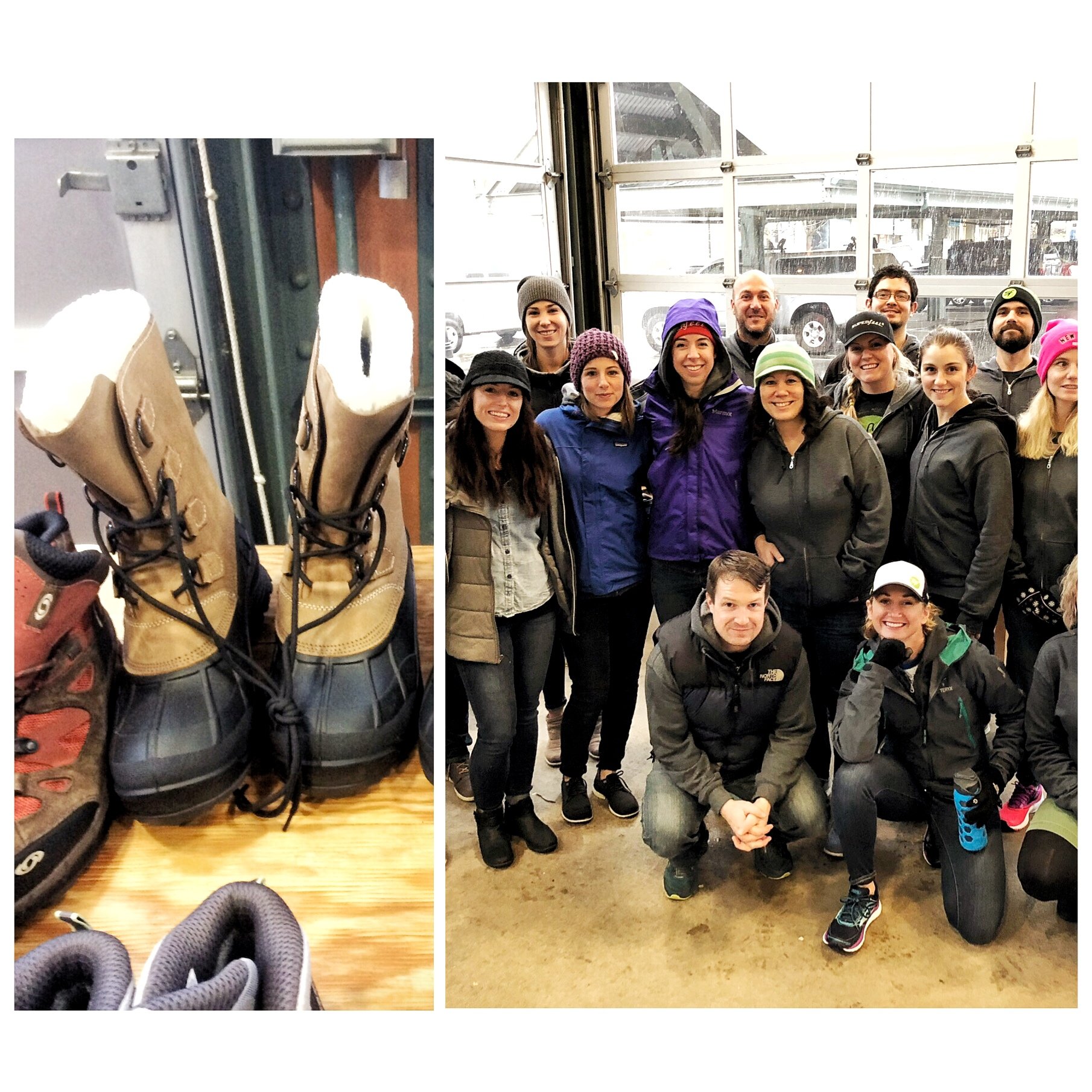
Hearts to Soles
The organization that we partnered with yesterday is called Hearts to Soles. Here is a snapshot of their mission statement.
The mission of Our Hearts to Your Soles is to provide the less fortunate across the United States with shoes and free foot examinations. We believe that proper foot health is an essential part of everyday life and important to an overall health maintenance program.
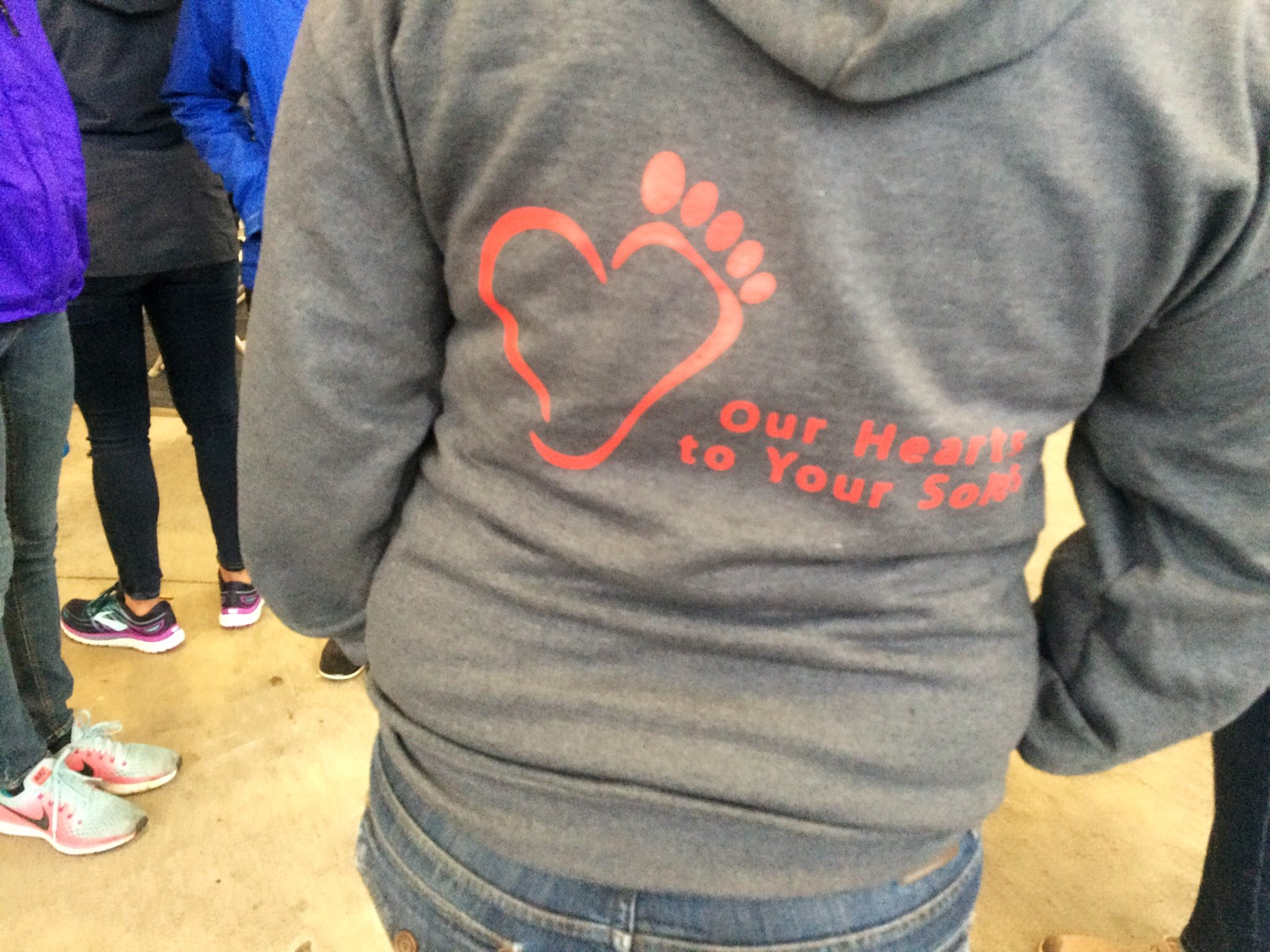
He worked with his father (who was a surgeon at the hospital) to partner with the Lighthouse Mission and footwear companies to donate shoes. Their first event was in Pittsburgh in 2004, and they have now expanded to 35 cities. The Hearts to Soles events always happens the week before Thanksgiving.
About 10 years ago, my company started donating supportive insoles to all 35 events so that the recipients could not only get a quality pair of boots, but support as well.
Starting out the Day
We got locked out during setup
A big group of us and several truckloads of boots, tables and supplies all arrived at the venue at 7:30 am to start setting up.
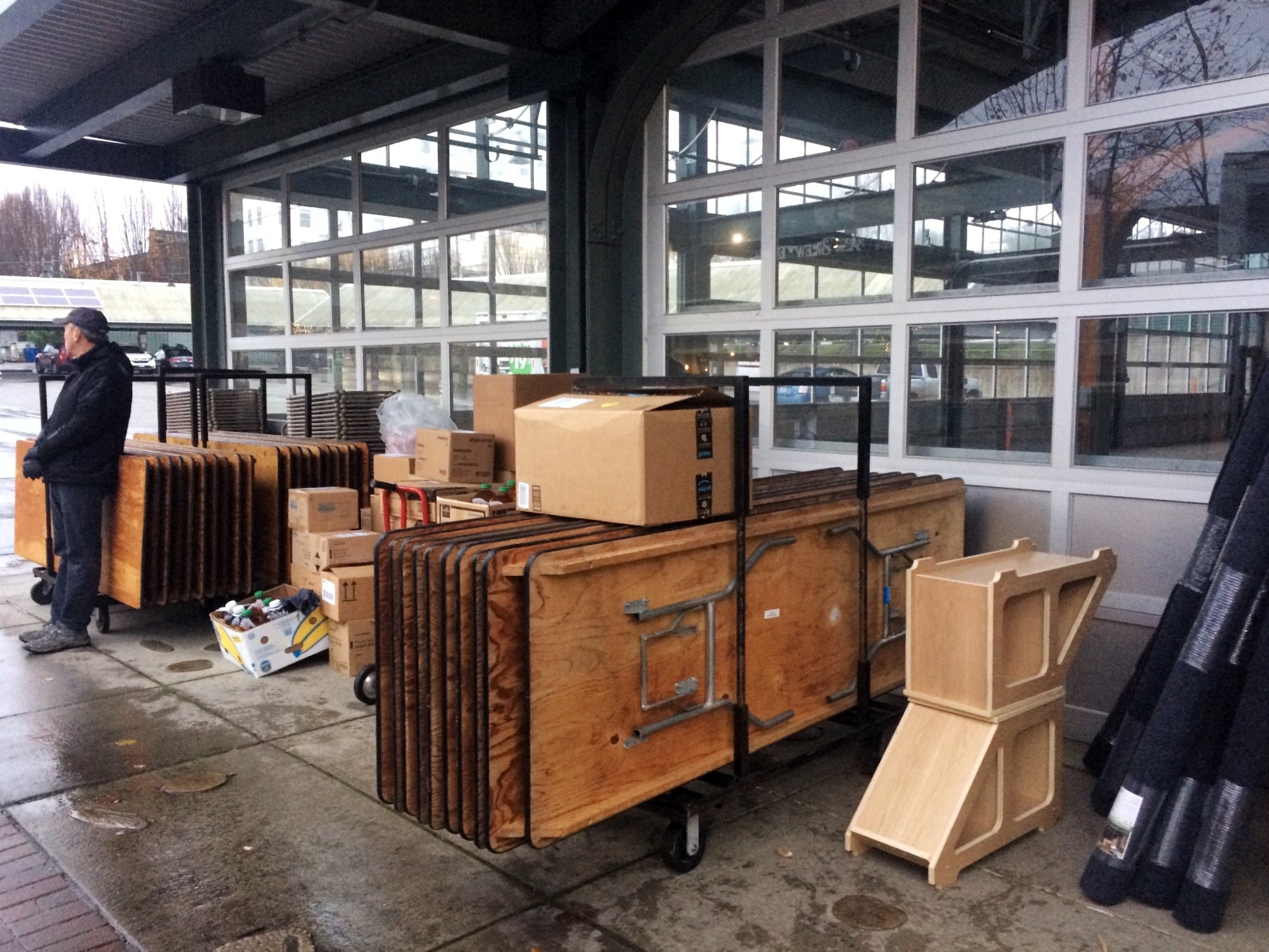
Unfortunately, the city employee was an entire hour late to let us in. No apologee, no explanation and we could not reach him by phone despite multiple attempts.
We actually had a few people drive down to the city office when they opened at 8m to explain the situation, but it still took over a half hour for someone to arrive with a key.
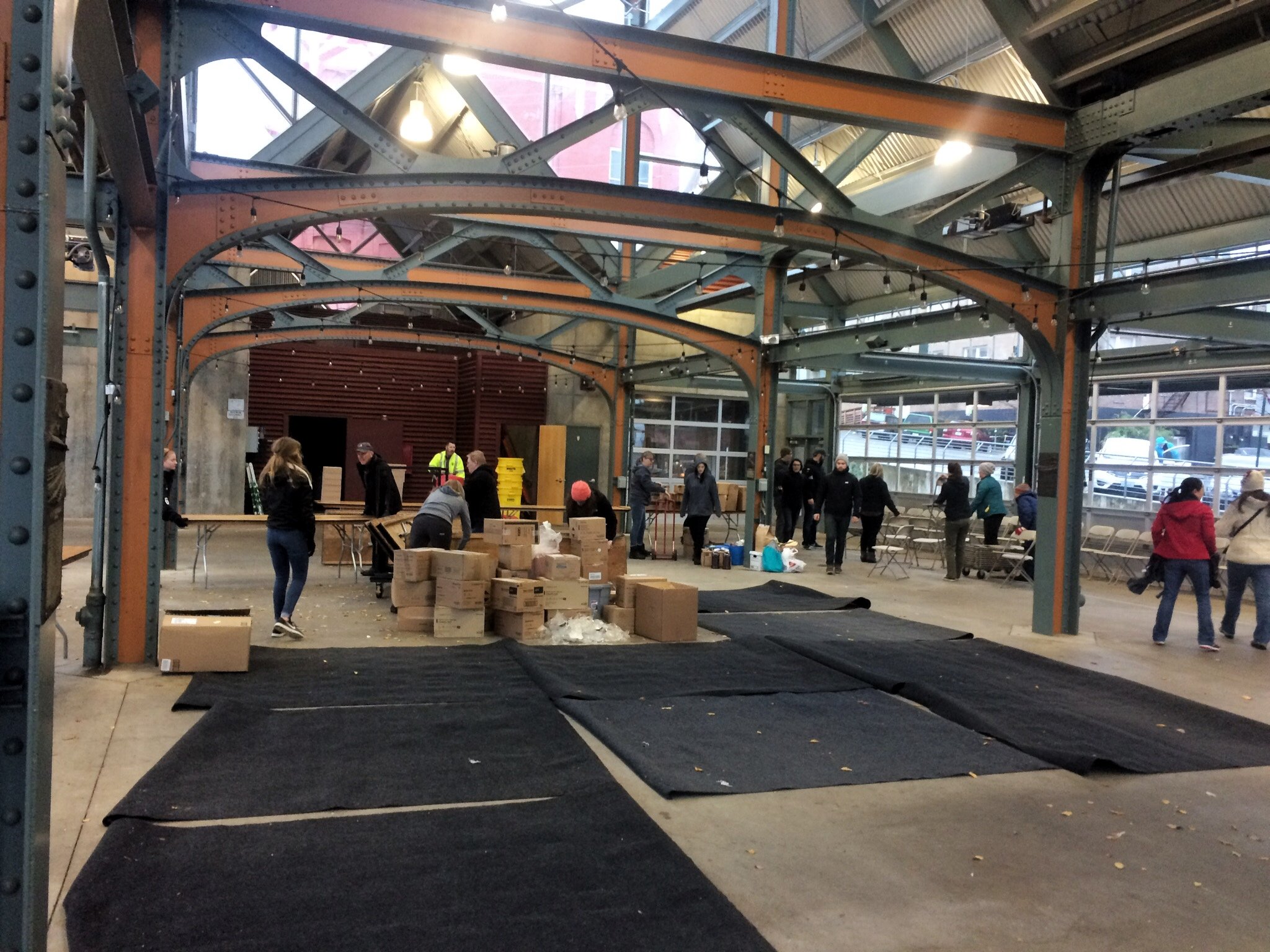
We were all pretty chilled to the bone by the time he showed up to let us in, as it was 30 something degrees fahrenheit and raining! Luckily there was a small overhang that we huddled under to stay dry.
Once we got in, it was a mad rush to start organizing and setting the space up. Luckily, the organizers did a great job planning things out, and we had enough volunteers that we were still able to get everything configured in time for the event to start.
Unboxing the boots
I was blown away by the quality boots we received as donations.
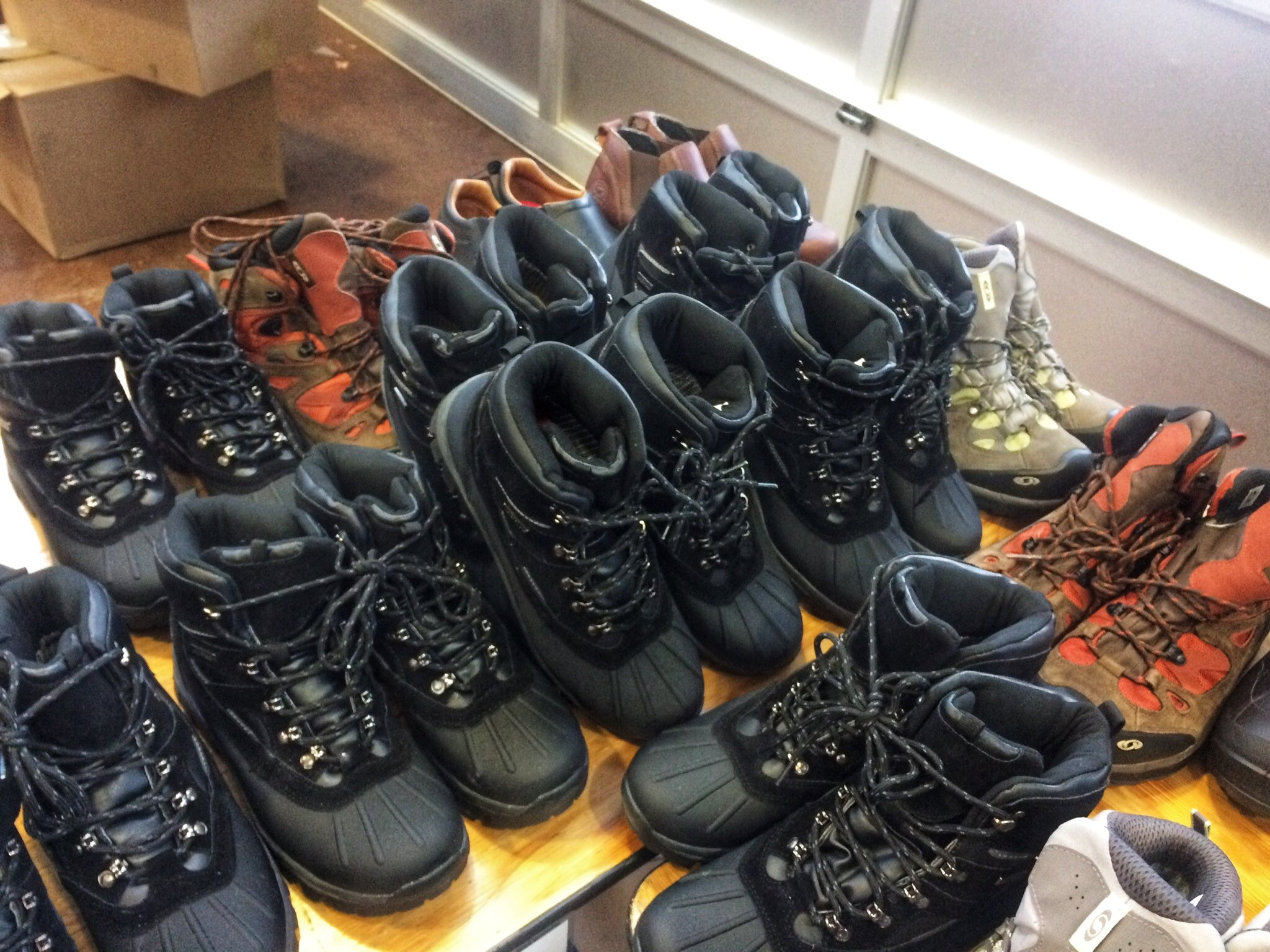
They were waterproof, insulated and had a thick sole. Most of the boots probably retail for between $150-200, not to mention that they have a $50 insole added to them.
Brands like RedWing also donated some dressier style shoes for those who wanted a pair of shoes that would be appropriate for interviews.
We had a limited supply of these, but it meant some people were able to get a second pair of shoes.
There were lines around the block!
Several hours before the event started, there was a line starting to form.
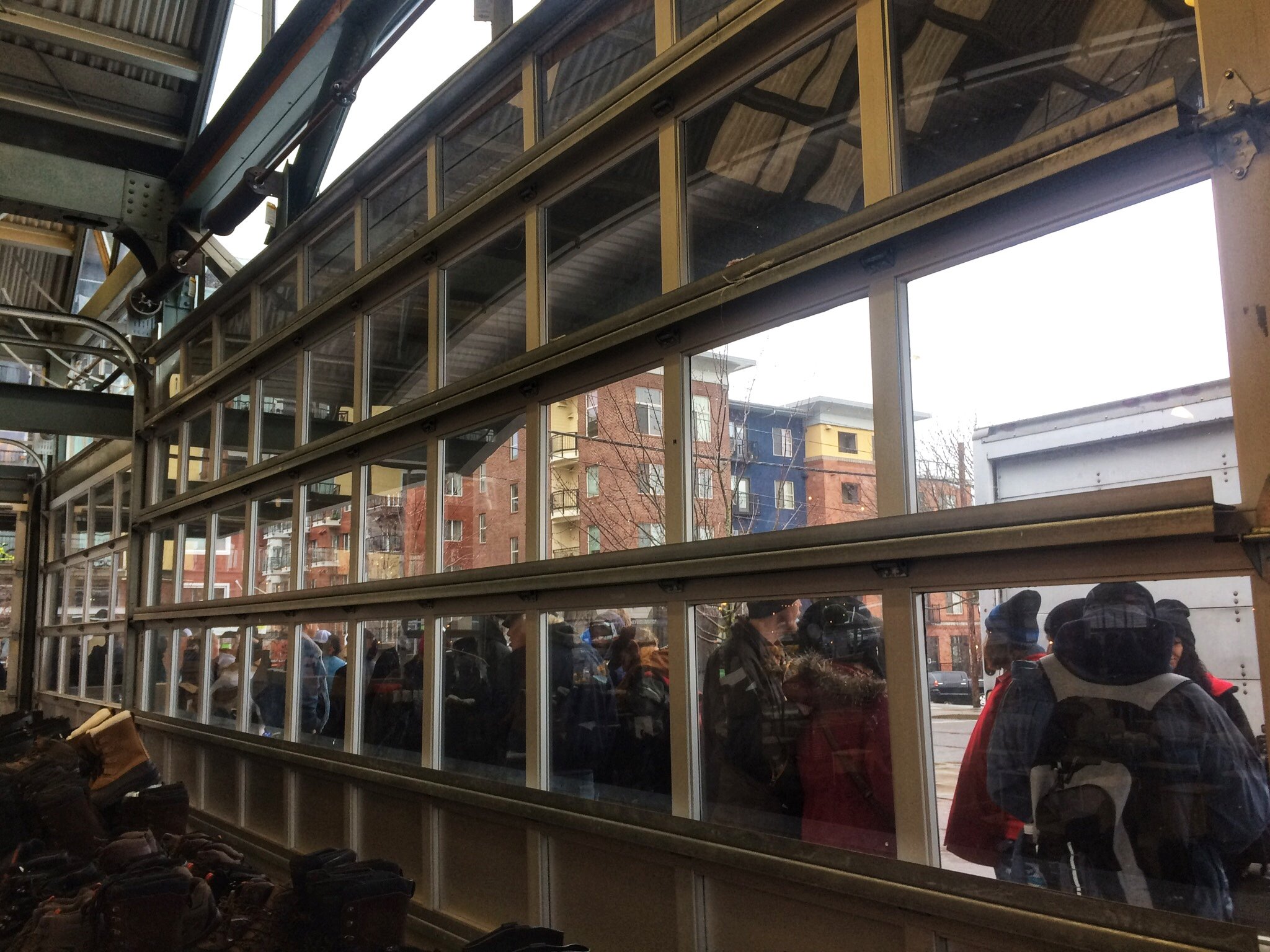
By the time we opened our doors at 10am, there were probably 200 people who had been standing in the rain for a long period of time.
Many of the people who came through were wearing the boots they received last year. Bellingham has been running a Hearts to Soles event for about 10 years and so this is an important annual event for most of the people who came through.
The Flow of the Event
Step 1- Check in and get a hot cup of coffee
We allowed in 10 people at a time to ensure that we kept a nice flow throughout the day and that when people finally did make it inside, they would have a place to sit. After checking in and getting a number, they could go grab a cup of coffee, some juice, fruit, cheese and donuts.
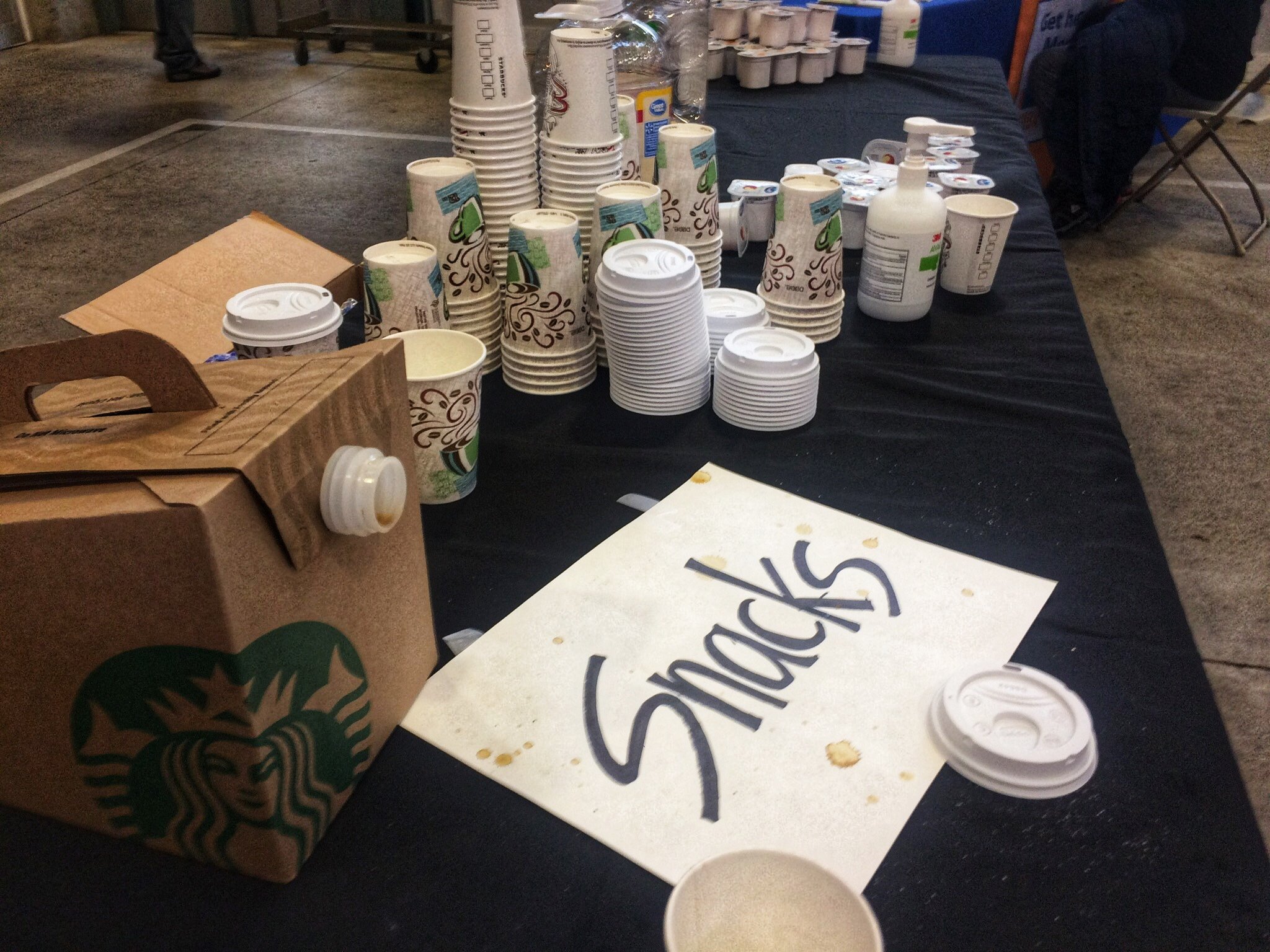
We had a small waiting area where they could sit and enjoy the coffee and donuts before starting the entire shoe fitting process.
While they waited, there were a few healthcare and insurance specialists in the waiting area that could answer any questions on what types of medical coverage they have access to under Medicare and Medicaid, and how to best utilize those resources.
Step 2 - Get some clean and cozy socks
Once their number was called up, they would get to choose a couple pair of wool socks. We did also have some thin socks available for those who wanted something that could work in a dress shoe.
Step 3 - Foot sanitation station
Everyone that went through the process was required to wipe down their feet with sanitary wipes prior to being helped. This stage was really humbling for me to experience, because people's feet looked so worn and weathered from being in the elements every day. You can also imagine this was an important step for the volunteers who would actually be working with their feet. Even though everyone wore gloves, it was important that they have clean feet going in.
Step 4 - Foot cleaning and foot health consult with a registered nurse
This was one of the coolest parts of the entire event.
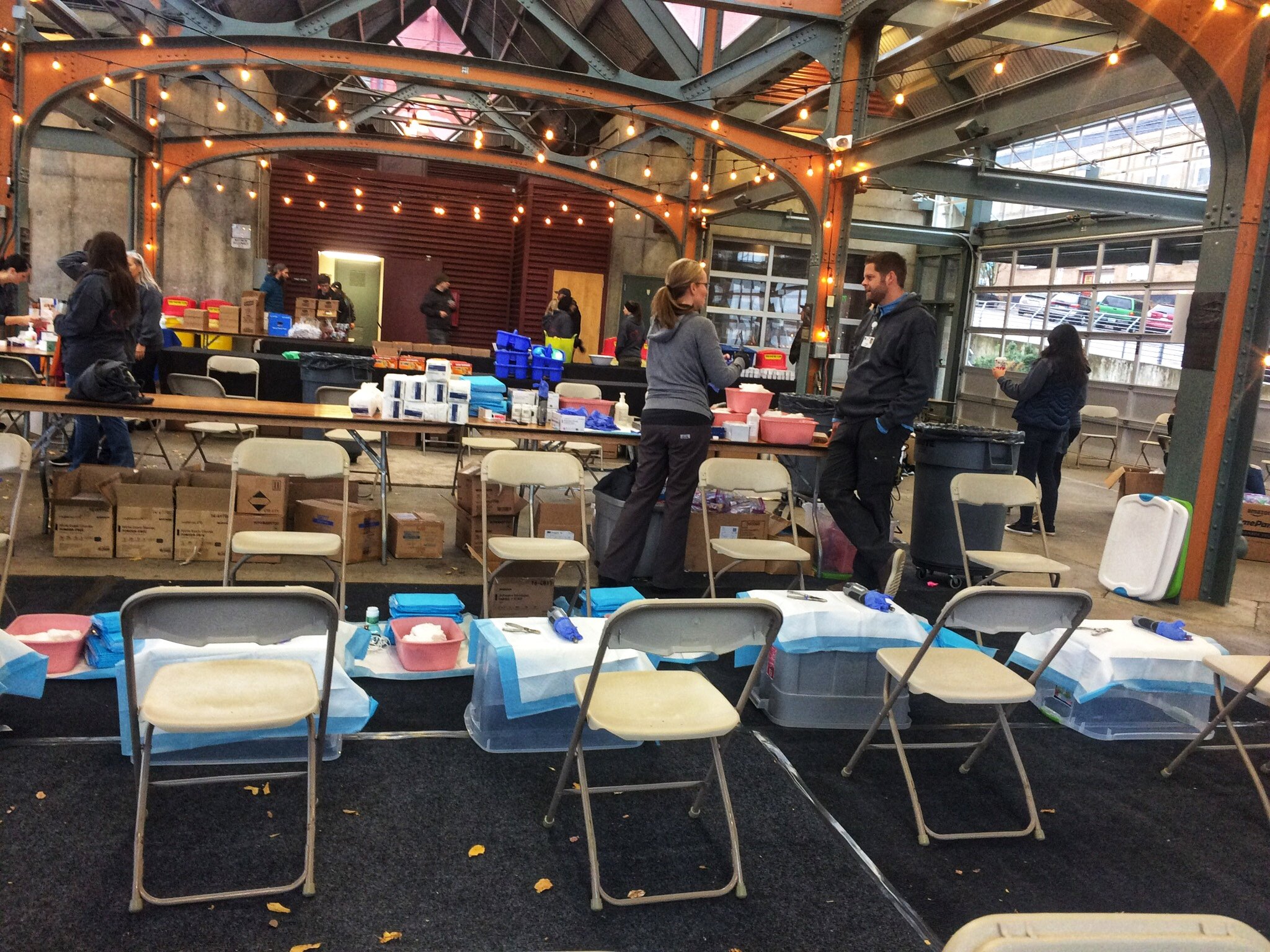
People got to have their feet cared for by a nurse, in addition to discusisng any foot health issues or pain they were having. Many of the homeless people who came through the event were grateful to have someone to talk with.
Step 5 - Medical consult with a doctor
This was an optional step - but we had 2 doctors on site that could sit down and answer any medical questions they had while going through the process. I thought this was a great resource to have available. Many of these people probably don't get to visit the doctor very often and likely had a list of medical questions. The doctors seemed pretty busy throughout the day meeting with people!
Step 5 - Meet with the boot fitter
This is where most of our employees spent their time. As an insole company, we are accustomed to analyzing peoples feet and finding the best fit in a piece of footwear.
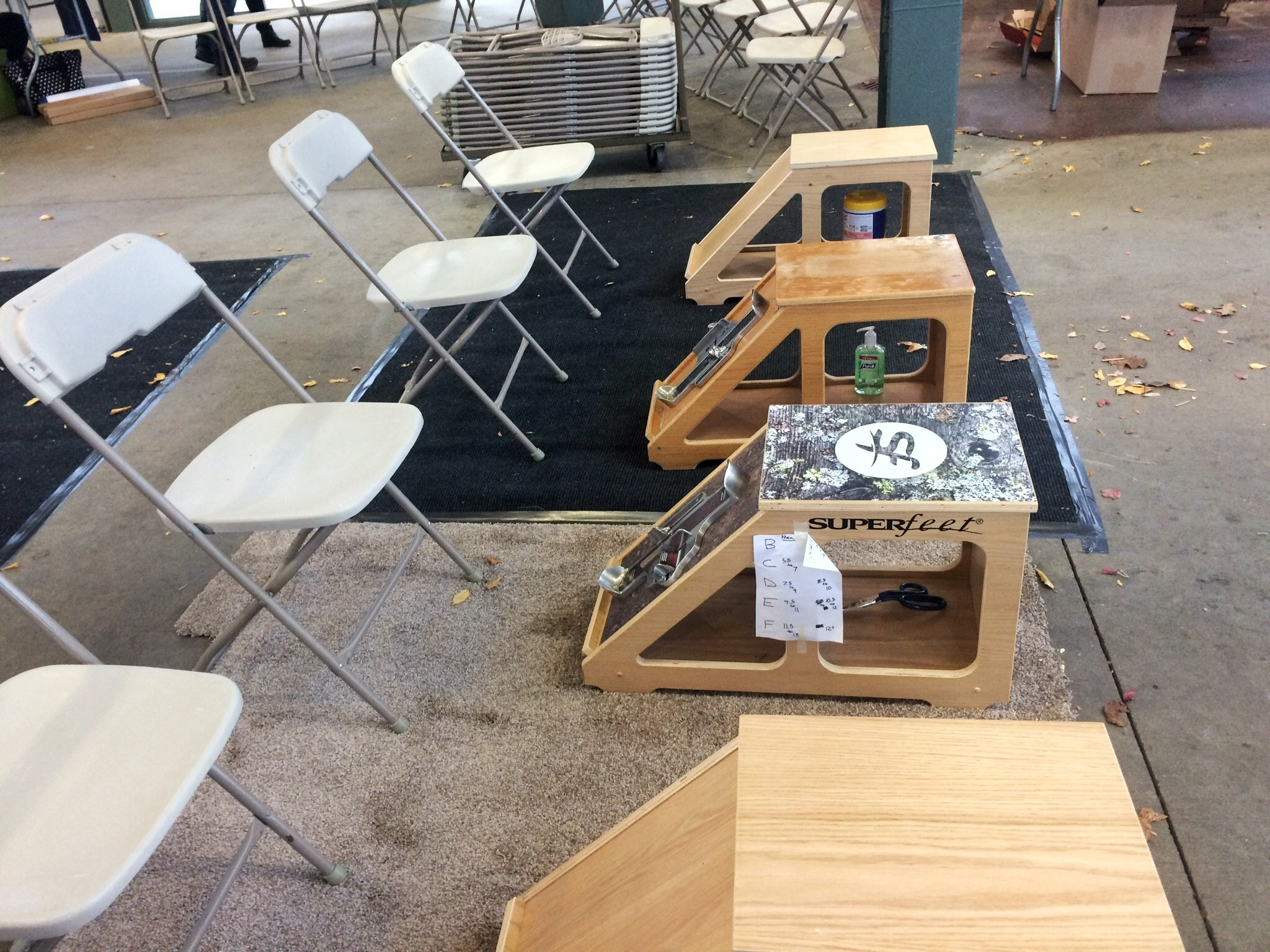
In reality though, people don't often know their true size - and sizing can vary drastically from one brand to the next!
Some people also may have wide or narrow feet and so having an expert boot fitter evaluate and measure their feet can ensure they land in a pair of shoes that will actually be comfortable for them to wear all day.
My Thoughts and Experiences from the Day
I was expecting to be a boot fitter, but they asked me to act as a greeter/security in the waiting area. The greeter part of it was easy for me - I've done Customer Service type jobs my whole life - but security?
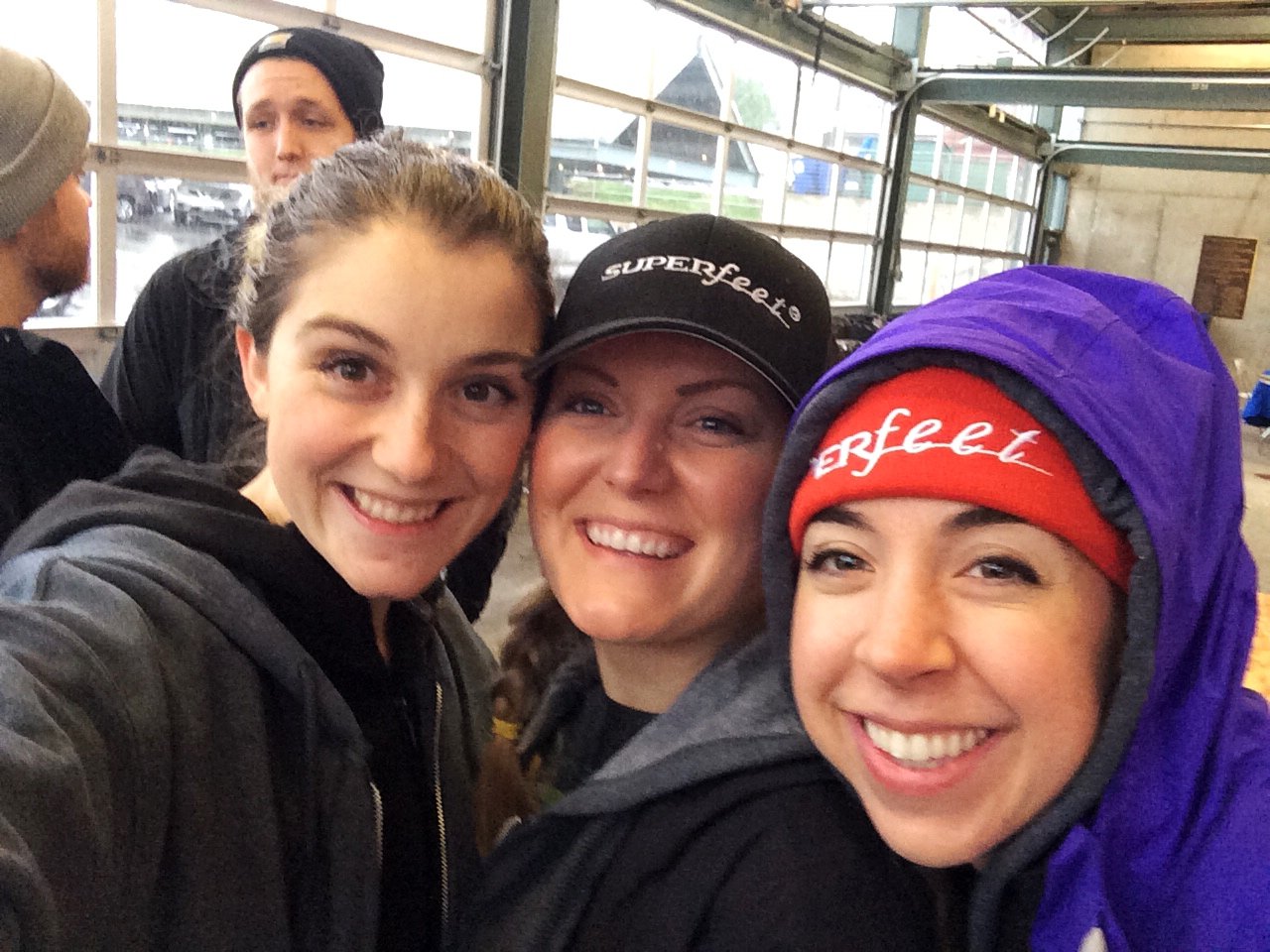
Most people were really appreciative and followed instructions, but I did have a couple dicey situations throughout the day. We did have a couple of police officers on site, but I only had to have someone removed once.
One of my biggest fears coming into the day, was that I wouldn't know how to communicate with the people coming in. What is the right balance of showing empathy, without it turning to sympathy? Would I say the wrong things and come across as condescending or insensitive?
What I found, is that this group of people had similar dynamics to any other type of social group you might come across. There were the victims, the jokers, the happy/cheerful type and the drama queens that just want a lot of attention. There were those that seemed embarrassed to be there and just kept their head down, where there were others who wanted someone to joke around with and have a good laugh.
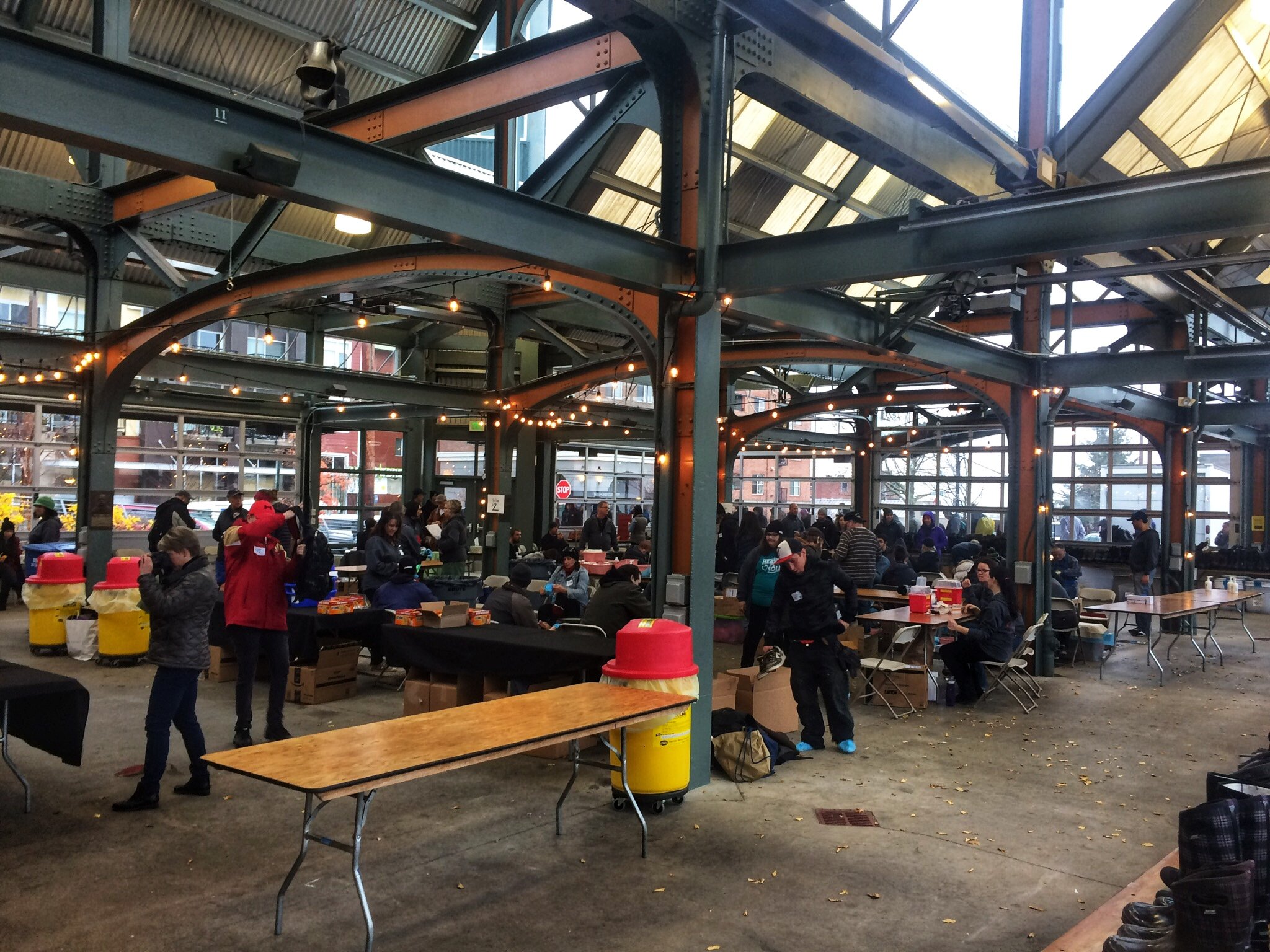
An interesting story from the day was that I witnessed a guy shove two whole packs of wipes (from the sanitation station) into his bag.
I knew I had to say something, but I was a little nervous considering that the guy was about 4 times my size and I really hate confrontation. The conversation went down something like this:
Me: Hey man, you know you aren't supposed to take those wipes.
Him: (Shrugs and puts a pack of wipes back)
Me: Come on now, I know you've got another one in there!
Him: (Busts up laughing) Dang girl, you got eyes like a hawk!
What went from a stressful moment, suddenly dissolved into a friendlier interaction. Throughout the day when i'd see him - I'd give him shit and let him know my hawk eyes were watching him. He'd laugh and tell people coming in to not mess with the "wipes police over there".
I had a lot of interactions like that that kind of surprised me through the day.
Conclusion
Overall, i'd say this was a humbling experience. I don't interact with the homeless population very often and the thought of not having basic needs such as shelter, food and warmth are foreign to me. I live my life from the perspective of personal responsibility and have always struggled with the idea that some people are "unable to help themselves" and don't have any opportunities to change their life situation.
In the United States, there are a lot of resources available to ensure that they all have access to food and shelter. Beyond that, many cities have great rehabilitation programs to help them learn necessary skills to re-enter the workforce, and even aid with getting interviews.
I do wonder if i'm being too judgmental or not emphatic enough though. After all, I have never been in their shoes, and have never gone a day without basic needs. I can imagine that wondering where your next meal will come from would dramatically change your ability to think and plan for long term success.
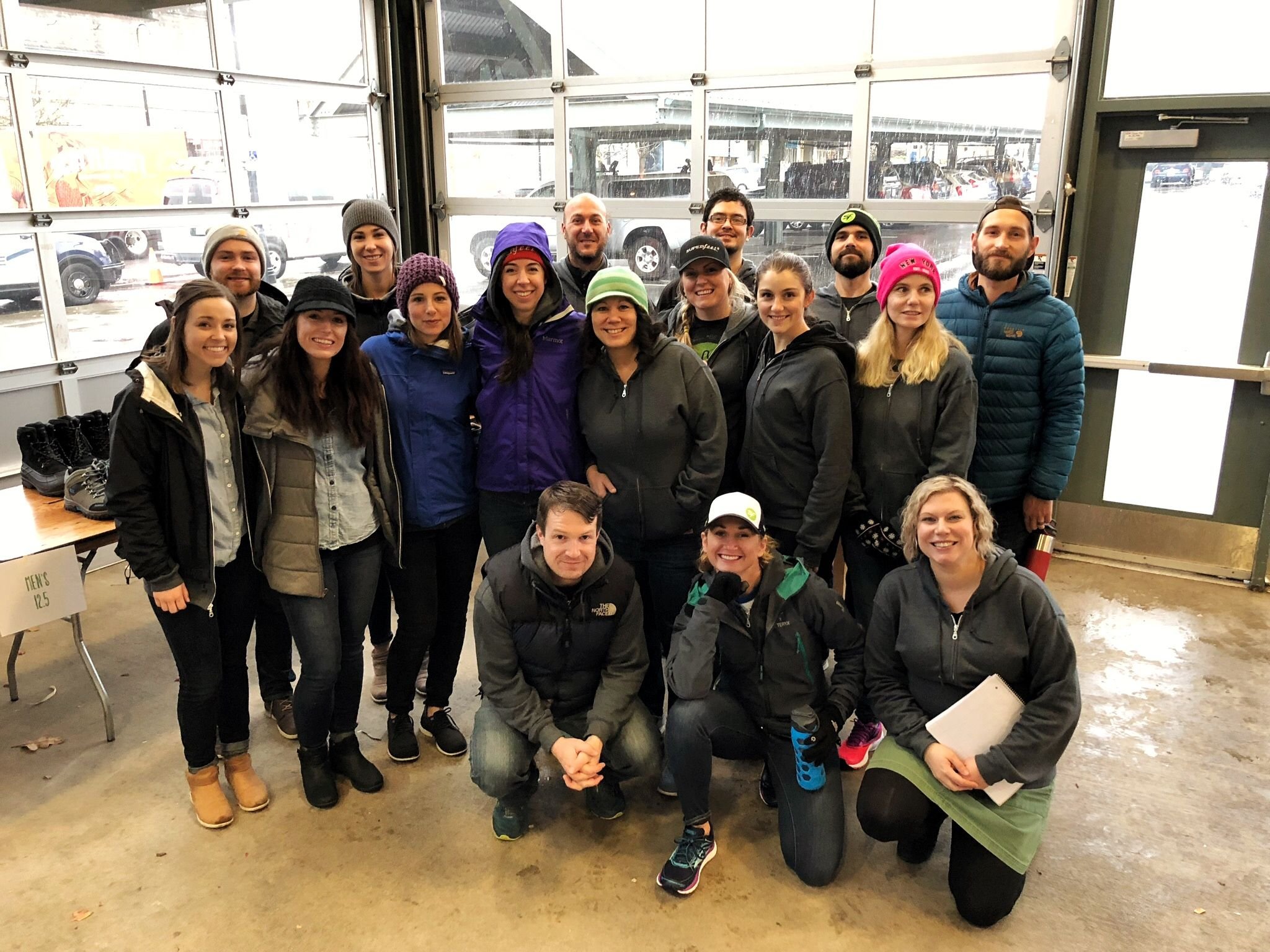
I was curious if interacting with over 500 people of the homeless population would alter my view. From my experience yesterday, I feel like there were two different groups of people that came through. Those that maybe feel a little ashamed that they need to ask for help, and seemed genuinely grateful for everything we were doing. This population of people were more likely to ask about the different resources available to them and try to get a pair of "interview shoes".
The second group of people are what I would call the "established crew". They have been homeless for years and didn't seem very appreciate at all. In fact, many of these people tried to come through the line twice and I had to ask them to leave. This group of people were more likely to be demanding and ask for lots of extra things as they went through the line.
I'm curious, have you had much experience working with the homeless population? Do you think most of them are taking steps to better their life situation, or are they stuck in their situation due to life circumstances? I don't really feel like I have enough life experience with this to have a fully formed view, and so I welcome your thoughts and opinions.
A Few of My Recent Posts
Always Hitting You With The Good Stuff!




